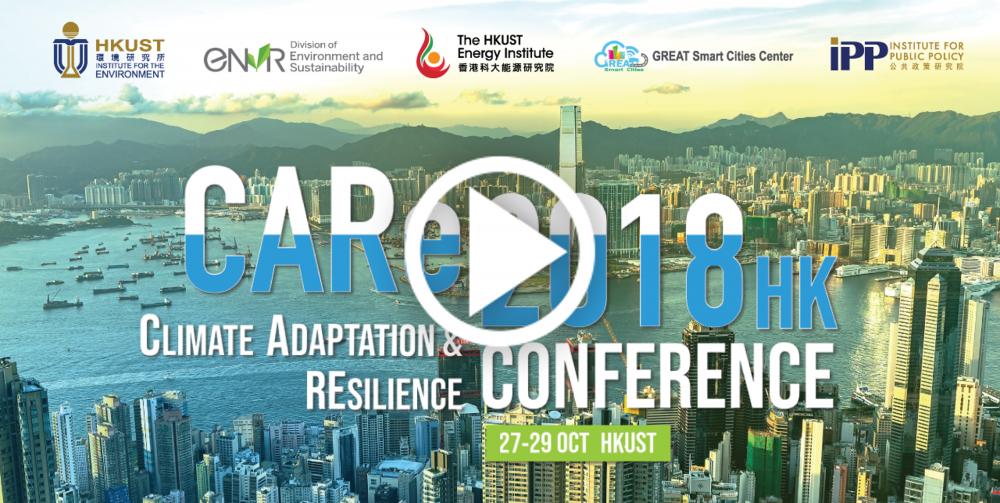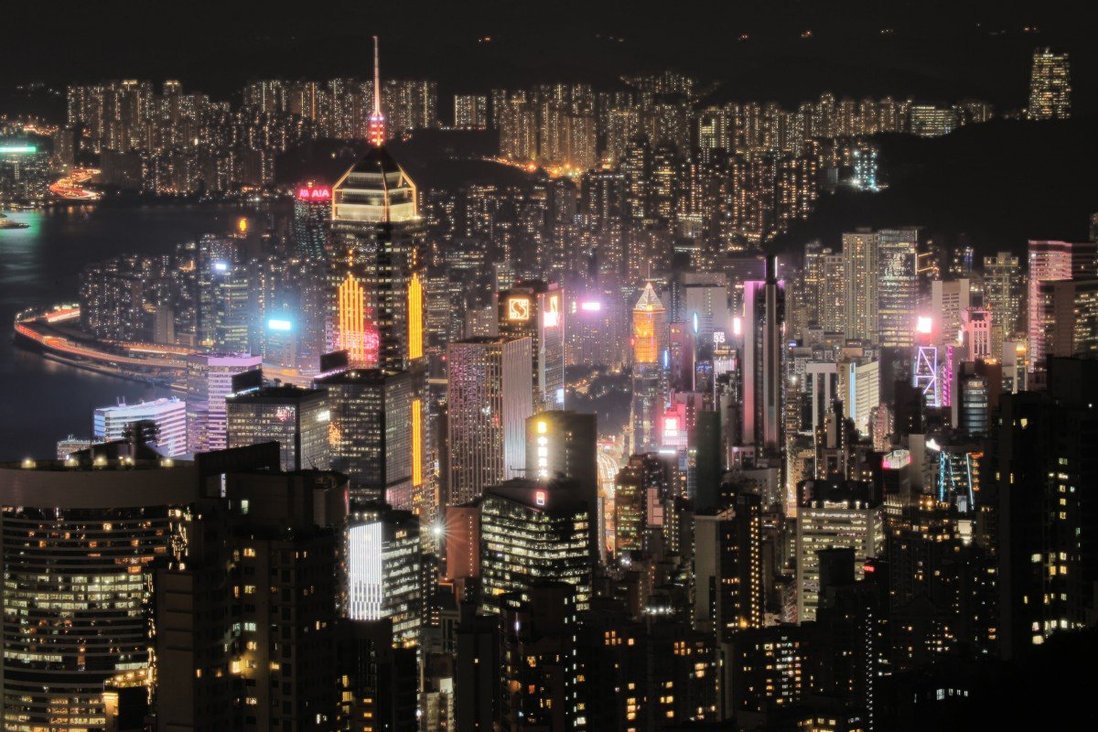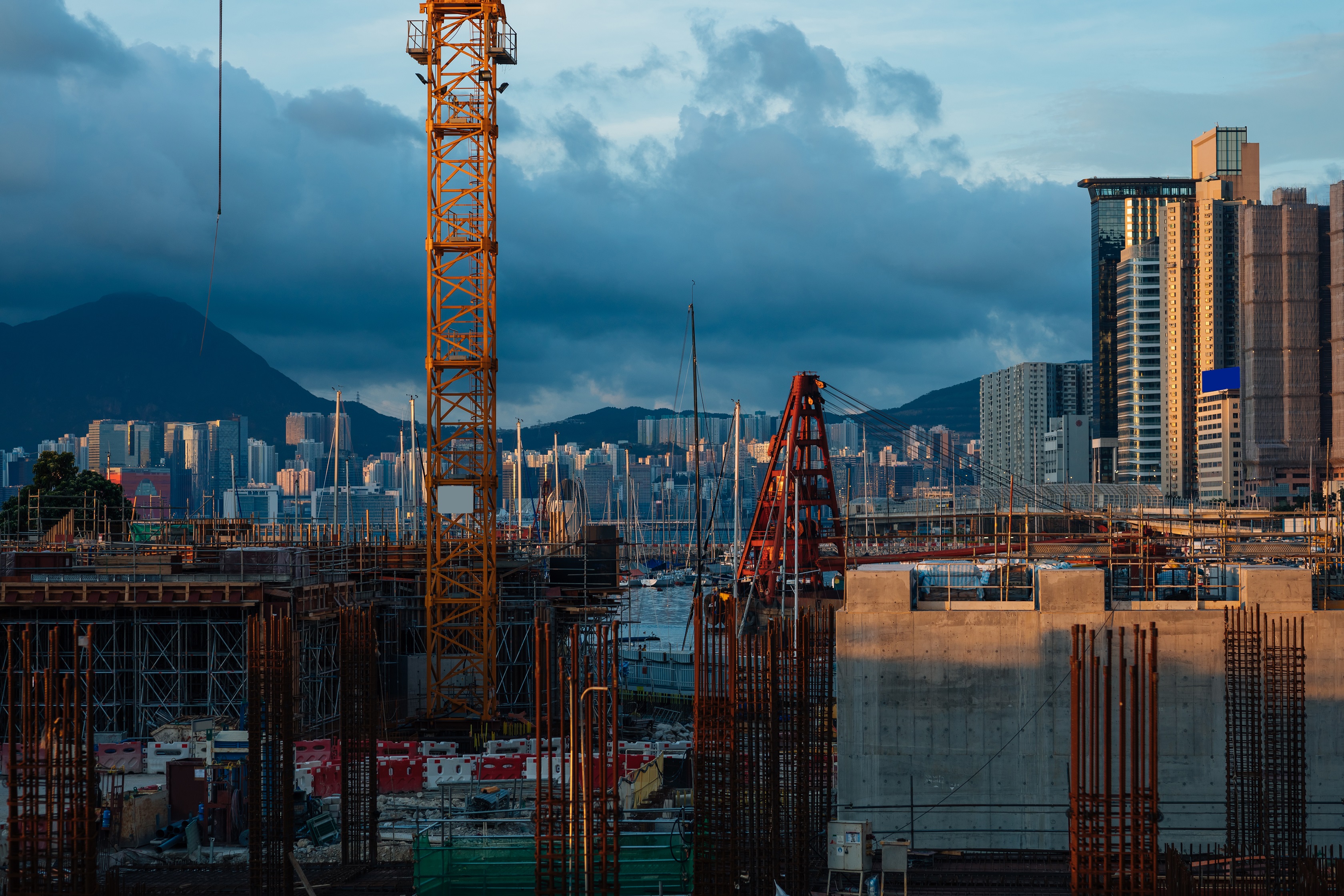This website will be updated every month with new materials to facilitate timely and informed discussion. Please stay tuned.

Sustainable Northern metropolis

A Carbon-neutral Northern Metropolis. Now That's a Plan Worth Executing
By: Prof. Christine LOH (HKUST)
READ SCMP (2022.07.11)
A Sustainable and Carbon Neutral Vision for the Northern Metropolis
The conceptual plan for developing the Northern Metropolis attracted strong, positive response from the community after it was announced in the 2021 Policy Address on 6 October. It would make sense for the Northern Metropolis on Hong Kong’s side of the border and for Shenzhen’s southern side to be co-designed using a similar future-forward approach if not the same approach, as it is an area sharing the same climatic and ecological conditions, and with mutual interests in their further development. A future-forward approach is one that takes the long-term into account, the driving force for which has already been articulated through national development principles and local-regional plans. Nationally, the goal of sustainable development is to achieve ecological civilization, a constitutional mandate since 2018. It requires development plans to embody and integrate strong environmental, biodiversity, and socio-economic progress so that they are to be achieved concurrently to create a new kind of civilizational expression that is ecologically-and-human focussed. Regionally, Hong Kong and Shenzhen are parts of the Greater Bay Area (GBA). GBA planning conceives of them as part of a megalopolis that includes Macao and nine cities in Guangdong Province. The GBA has enormous potentials as it is already a thriving commercial-manufacturing-logistics-technology and finance hub on a global scale. The intention is for the GBA to advance further and faster through skillful integration.
Moreover, China has embarked on a sustainable pathway for fast-paced transformation from a high-carbon to a carbon neutral economy by 2060, while the Special Administrative Region of Hong Kong has already adopted the target of achieving carbon neutrality by 2050. Hence, the Northern Metropolis, and its Shenzhen counterpart, must plan for achieving the goals of sustainable development, carbon neutrality and ecological civilization. We suggest these principles be clearly stated from the outset by the Hong Kong-Shenzhen authorities so that there is a unifying vision to guide a truly integrated, multidisciplinary plan for the whole area.
This opportunity provides exciting socio-economic opportunities for every segment of society, as well as for commercial and non-profit activities. The national, regional and local authorities have used various narratives at various times to describe their policies to create the future – such as ‘people-centered’, ‘common prosperity', ‘well-being of the people’, ‘smart and healthy cities’, ‘green and low carbon living’ and ‘sustainable development’. The people will interpret government plans using those same yardsticks. It is through the actualization of these positive concepts, and achievements of stated goals and targets, that the people will judge whether the leadership is meeting the challenge.
This is the first of a series of short ‘think papers’ to flesh out the thinking of a group of scholars from diverse backgrounds and institutions, coordinated by HKUST. We hope the effort will assist the authorities, as well as help society to see risks and opportunities more clearly in making choices for development. Similar ideas could be relevant also to the HKSAR Government’s other development plans.
READ PRESS RELEASE (2022.04.28)
![]()
What is this Sustainable Northern Metropolis page about? Listen to Prof. Christine LOH (Chief Development Strategist, Institute for the Environment)
Concept & Strategy of the Northern Metropolis
The Northern Metropolis concept is not the development of a virgin or lightly built area. It is a concept to consolidate and reconceptualize an area referred to as the Northern Economic Belt under the spatial framework of Hong Kong 2030+: Towards a Planning Vision and Strategy Transcending 2030. It outlines a vision of a metropolitan area marked with “urban-rural integration and co-existence of development and conservation.” It could be said that it is a replanning exercise of previous government ideas with specific emphasis in sustainable development, biodiversity, reindustrialization, and innovation.
Spanning across the Yuen Long District and the North District with a total land area of about 30,000 hectares, the metropolis is planned to house 2.5 million people and provide 650,000 new jobs. Its geographical proximity with Shenzhen also presents an excellent opportunity for mutually beneficial economic and ecological integration, laying the cornerstone for its transformation into not only an international innovation and technology (I&T) hub, but also a resilient ecological area.
If planned in a future-forward manner, the Northern Metropolis has the potential of opening a new chapter in Hong Kong’s carbon-neutral socio-economic development that is based on achieving sustainable development and ecological civilization. This paper discusses ideas fundamental to it becoming such a thriving, liveable metropolis.
Prof. KK LING, the urban planner behind the Northern Metropolis, says it has been in the works for some years. Housing is a priority, and the two other objectives are to create a second economic engine for Hong Kong and create jobs there. This second engine includes modern services, advanced manufacturing, and I&T. Ling refers to the plan as containing a ‘big bet’ on I&T and integration with Shenzhen, in which housing, jobs, and transport are in proximity to enable easy mobility. To realize the project, proactive private land resumption will be necessary for housing and nature conservation.
READ PROF. LING's INTERVIEW (Credit: French Chamber:HongKongEcho) |
READ PROF LING's SPEECH (Credit: British Chamber of Commerce) |
Climate Action Now and Towards 2050
Much of the public attention on the Hong Kong's Climate Action Plan 2050, published immediately after the 2021 Policy Address, focussed on climate mitigation. Decarbonization is of course vitally important. However, in reconceptualizing any development area, the first step is to consider the climate risks the area faces and how to adapt to them using thoughtful design, innovation, and technology. In effect, climate adaptation is the planning of defensive mechanisms that must be robust and resilient so that people, assets, and biodiversity could be safeguarded.
I&T, Housing, and Hong Kong Budget 2022
By: Prof. Christine LOH (HKUST)
The Financial Secretary’s 2022 Budget looked at the Northern Metropolis (NM) development from a land supply perspective that would provide housing, and for innovation and technology (I&T) ...
READ MORE
Climate Adaptation
Hence, an early consideration must be sea-level rise. The GBA lies within a geographical area that is threatened, the pace of which is increasing according to the latest science. Investors and businesses are increasingly interested to understand the risks to assets in vulnerable areas. Important energy generation and other assets are located in the Northern Metropolis. The planning for how to deal with sea level rise is primarily a government function. HKUST and China Water Risk (CWR) will co-publish a paper on this as part of the series of think papers.
The Hong Kong authorities have already considered the impact of sea-level rise as internal studies have been carried out although the results have not been published. We believe any such studies should be released so that an informed discussion could take place. Those studies are relevant for the planning of the Northern Metropolis. Studies done on Shenzhen would also be relevant. It would be preferable for studies relevant to Hong Kong and Shenzhen to be considered together for planning.
The mainland has existing plans to design and implement sponge cities over the course of the next decade. The idea of a sponge city is a nature-based approach for cities to improve the capacity to mainstream urban water management into urban planning policies and designs. Hong Kong’s version of sponge city is ‘blue-green infrastructure’, which has already been successfully implemented on small scale at various places. Hong Kong has experience in using nature-based solutions in city design and these can be implemented in the Northern Metropolis.
In reconceptualizing the Northern Metropolis and the adjoining area in Shenzhen (since Shenzhen has to implement sponge city as part of the national mandate), it makes sense for Hong Kong to work out a future-forward plan for strengthening the drainage system, improve flood management, and reuse rainwater using ecological and nature-based thinking in their design. We will develop a paper on this topic as part of the series of think papers.
Moreover, creating higher ecological resilience through strengthening the biodiversity base is vital for all areas of the world, including plans for the Northern Metropolis. This series of think papers will include forestry and biodiversity.
See Insights from key area experts:
Waterproofing our Key Links to the GBA from Costal Threats
By: Dr. CT LOW (CWR)
READ MORE
2017 and 2018 were horrific years for extreme climate events worldwide including Hong Kong. CARe2018 Conference brought together a wide range of experts and stakeholders from across the globe, across industry and business sectors, as well as from local and regional authorities to learn and examine what it would take to make cities and regions much more climate-resilient.
Visit CARe2018 website
Introducing Nature-based Solution to the new Northern Metropolis
By: Prof. Zhongming LU (HKUST)
Digitalization of the New Northern Metropolis Development
By: Prof. Zhongming LU (HKUST)
Regional Cooperation & Opportunities for a Biodiverse Low Carbon Northern Metropolis
By: Ms. Olivia TO (HKUST)
Strengthening Infrastructure Resilience to Extreme Weather in Northern Metropolis
By: Ms. Olivia TO (HKUST) | Prof. Zhongming LU (HKUST) | Dr. CT LOW (CWR)
Ensuring buildings and infrastructure systems are resilient in face of extreme weather events requires a sustainable, innovative and multidimensional approach in infrastructure planning ...
READ MORE
Sustainable Strategies (Digitalisation, Nature-Based Solutions, & Green Finance)
By: Dr. Zhongming LU (HKUST) | Prof. Faith CHAN (University of Nottingham Ningbo China)
The Northern Metropolis (NM) concept plan has strong public support, so it is important to do a good job in its detailed planning and eventual execution ...
READ MORE
The Need for Multidisciplinary Talents
By: Dr. Roy LAW (HKUST) | Ms. Olivia TO (HKUST) | Mr. Bernard NG (HKSTP) | Ms. Cathy LO (HKSTP)
The Northern Metropolis (NM) concept plan is a mega project that should be well-integrated to achieve several stated policy goals ...
READ MORE
A Biodiverse Zero-Carbon Project
By: Ms. Olivia TO (HKUST) | Dr. Michael LAU (Hong Kong Wetlands Conservation Association) | Prof. Faith CHAN (University of Nottingham Ningbo China)
Carrie Lam, announced the Northern Metropolis Development Strategy as an "Urban-Rural Integration and Co-existence of Development and Conservation" plan ...
READ MORE Eng | Chi
Role of Wetlands in a Sustainable Northern Metropolis
By: Dr. Michael LAU (Hong Kong Wetlands Conservation Association)
Aquaculture should be expanded to cover the traditional pond fish culture which is exemplary of the wise use of wetlands. Another aim should be added with respect to climate resilience ...
READ MORE
Climate Mitigation
The HKSAR Government pledged to achieve carbon neutrality by 2050. The Hong Kong's Climate Action Plan 2050 has FIVE main climate mitigation strategies to decarbonize:
- Clean electricity supply,
- Energy-saving,
- Green buildings,
- Green transport, and
- Waste reduction.
These strategies must of course be implemented throughout the city. Nevertheless, in reconceptualizing a specific development area, such as the Northern Metropolis, these strategies must be specifically considered and embedded. Such plans must be future-forward in orientation and in the best interest of Hong Kong's socio-economic-ecological development.
For Hong Kong to Achieve Carbon Neutrality by 2050, Commercial Buildings Must Cut Energy Use
By: Prof. Christine LOH (HKUST)
READ SCMP (2021.12.12)
Each of the five areas is highly specialized. For the purposes of this series of think papers that relates to the creation of a carbon neutral-sustainable vision for the Northern Metropolis, we will address FOUR relevant issues in partnership with local and mainland scholars, scientists, NGOs, and public corporation :
- A regional electricity market with an integrated power grid (instead of a connected grid) in the GBA to increase the renewable electricity generation and share of clean energy within the economy,
- Digitalising and greening infrastructure development planning to achieve low-carbon, healthy, and smart outcomes,
- Greening buildings both new buildings and retrofitting existing buildings so that they provide low carbon, health, and smart indoor environments, and
- Reindustrialization of industries in the Northern Metropolis, where land is available.
Innovation and Technology
The national 14th Five Year Plan envisages the Greater Bay Area as a thriving urban metropolis that is also an international I&T hub. Large areas in the Northern Metropolis are reserved for I&T development, which is the physical connectivity point between Hong Kong and Shenzhen.
Promotion of I&T includes investing in education, having the right enabling policies, as well as stimulating growth in the various areas mentioned above, which together forms the core of I&T application in the economy. The concept of “green-and-low carbon” is a key driver for I&T, which is why tech-innovations now have to be green – hence references are being made to Green-FinTech, Green-PropTech and Green-FoodTech.
Hong Kong is home to a variety of innovative companies that are breaking new ground. They are inspiring others, and they have good opportunities to grow.
The Climate Risk Digital Solution
By: Prof. Entela BENZ (Intensel Limited, HKUST)
Innovating For Hong Kong's Sustainable Future
By: Jason TU (MioTech)
Green Finance
The carbon-neutral-ecological civilization transformation requires substantial financing. Global capital increasingly requires data on the environment, social and governance (ESG) performance of projects to decide funding assessment and if funded, reporting on performance.
Public sector funding, such as in reducing climate risks and minimizing its impacts (for example, defensive infrastructure to sea level rise), integration of waste management facilities, provision of clean energy and revitalizing water bodies into drainage improvement works, will make all business entities more competitive. For example, if electricity supply is zero carbon, then all businesses could show zero carbon in calculating their emissions from using electricity.
Private-sector funding is also critical to ESG performance. While a private property development company could retrofit existing buildings to save energy, it could also improve indoor air quality at the same time to meet much higher standards to bring calculable health benefits to occupants. In its ESG reporting, the company could show not only energy saving and low carbon emissions in its environmental performance but also improved health of occupants in its social performance. At the same time, it should be possible to show better financial performance too due to higher productivity-lower sick days.
Strong ESG performance for Hong Kong-based companies will make the Hong Kong economy more competitive. As listed companies are required by the Hong Kong Exchanges and Clearing Limited to provide ESG reports, listed companies are beginning to require their suppliers to provide ESG information. As such, the corporate sector has an interest to cooperate to make everyone more competitive, and the authorities too should play a role to assist companies to embark on the ESG journey, as it will in turn improve environmental and social conditions in the city as a whole.
For the purpose of this series of think papers, there will be a HKUST contribution on greening the economy and finance.
Meeting financial challenge facing China’s Sponge City Program (SCP) – Hong Kong as a gateway to green finance
By: Dr. Faith CHAN (University of Nottingham Ningbo China), Prof. Christine LOH (HKUST) and others
This journal paper by a group of scholars including Faith Chan and Christine Loh focus on mainland China’s sponge city policy and projects. The paper explores a green finance role for Hong Kong to help the mainland raise finance for those projects.
READ MORE
抓低碳海運機遇 發揮大灣區潛能 (HKET) | City can play lead role in maritime decarbonization (China Daily)
By: Dr. ZHANG Yiqi (HKUST)
READ HKET (2022.06.01) READ CHINA DAILY (2022.06.08)
Policy-making Structure
Every administration from now on will have to pay special attention to the achievement of carbon neutrality. A major challenge is making complex, multi-disciplinary decisions. Climate change policymaking is led by Environment Bureau. Realizing that there were many cross-departmental issues, the Chief Secretary of the HKSAR chaired a specially established internal steering group to coordinate climate change decision-making. This task was taken up by the Chief Executive in 2021, as climate change became more important. Most recently, a new coordination office of climate change and carbon neutrality is being created within Environment Bureau. Moreover, the current Chief Executive has also proposed restructuring government Bureaux and Departments to be considered by the next term of government starting in July 2022. There is a case to be made that the HKSAR Government should think beyond administrative efficiency and consider how to distribute responsibility since the whole administration will have to be engaged for Hong Kong to achieve carbon neutrality by 2050, and there is an urgency to start that process across the bureaucracy now. The planning and implementation of the Northern Metropolis involves many Bureaux and Departments, and it provides an opportunity to reflect on the restructuring of the government bureaucracy.
This series of think papers will include a paper on the policy-making structure of the HKSAR Government and observations on the challenge presented by dealing with climate change with reference to the Northern Metropolis.
Sustainable development to guide John Lee’s initiatives
By: Prof. Christine LOH (HKUST)
READ CHINA DAILY (2022.05.05)
Restructuring the Bureaucracy to Achieve Carbon Neutrality
By: Prof. Christine LOH & Ms. Olivia TO (HKUST)
The current Chief Executive of the HKSAR proposed a plan to restructure the government bureaucracy for consideration by the next administration “to enhance the effectiveness of governance” and “meet social expectations” ...
READ MORE
Three-Dimensional Ambition: The Domestic, Regional and National Challenges for Hong Kong’s Greater Bay Area Integration Strategy
By: Prof. Samuel Chen Yi (HKU) & Prof. Zhang Xiaoling (CityU)
Hong Kong is embarking on ambitious urban development projects, notably the Northern Metropolis Development Strategy. This article analyzed the domestic, regional and national challenges the special administrative region faces as it aims to integrate with the Greater Bay Area, the emerging mega-region critical to China’s drive for sustainable socio-economic development ...
READ AsiaGlobal Online (2023.01.26)
SAR needs diverse governing team to facilitate multidisciplinary policymaking
By: Dr. Roy LAW (HKUST)
Hong Kong, once the most dynamic and vibrant city in Asia, is losing its competitive edge. People may argue this is because of the unfavorable external factors ...
READ CHINA DAILY (2022.05.17)
Conclusion
The Northern Metropolis provides an opportunity for Hong Kong to rethink development and how it should dovetail with the overarching goal of achieving sustainable development and carbon neutrality in 2050. We wish to contribute to its success through a series of think papers to stimulate discussion among scholars and the public.






